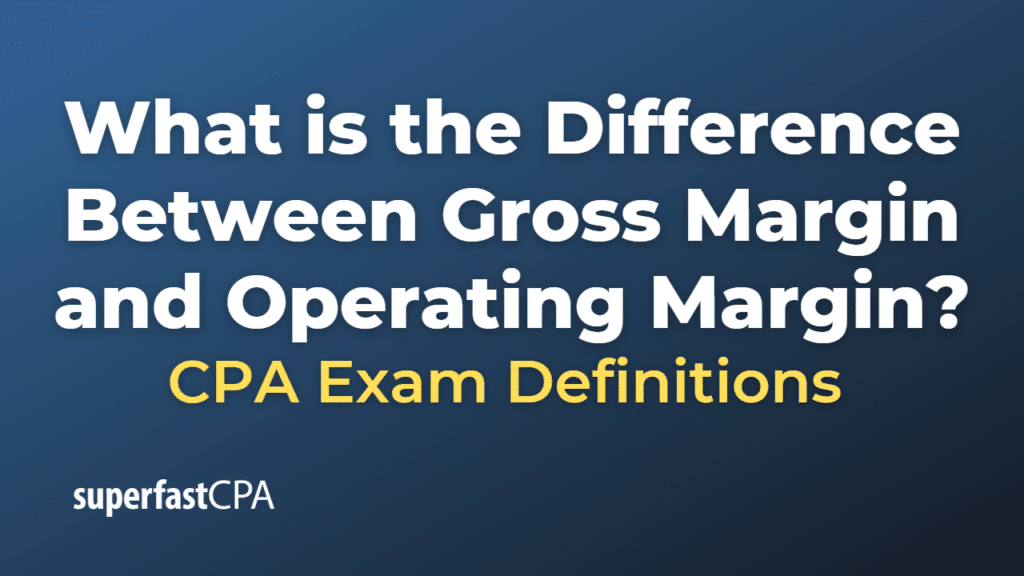Difference Between Gross Margin and Operating Margin
Gross Margin and Operating Margin are two financial metrics that provide different insights into a company’s profitability. They differ primarily in the types of costs they consider.
Gross Margin is a measure of a company’s direct production costs and provides an understanding of a company’s profitability on a per-product basis. It’s calculated by subtracting the cost of goods sold (COGS) from total revenue and then dividing by total revenue. The result is expressed as a percentage.
Gross Margin = [(Total Revenue – COGS) / Total Revenue] x 100%
Gross margin considers only the direct costs involved in producing goods or services, such as materials and direct labor costs.
Operating Margin, on the other hand, goes a step further by considering not only direct costs but also the indirect costs necessary to run the business. These include expenses such as rent, utilities, equipment, and salaries of administrative staff. Operating margin is calculated by subtracting operating expenses from gross profit and then dividing by total revenue. The result is expressed as a percentage.
Operating Margin = [(Gross Profit – Operating Expenses) / Total Revenue] x 100%
In summary, gross margin focuses on the cost of producing a product or service, while operating margin considers both production costs and the overhead costs associated with running the overall business. A company could have a high gross margin, but if its operating expenses are too high, it could still have a low (or even negative) operating margin. Thus, these two metrics together provide a more complete picture of a company’s financial health.
Example of the Difference Between Gross Margin and Operating Margin
Imagine we have a company, “Gadget Pro”, that manufactures and sells electronics. For the past year, Gadget Pro has reported:
- Total Revenue: $10,000,000
- Cost of Goods Sold (COGS): $4,000,000
- Operating Expenses (including rent, salaries, utilities, etc.): $1,000,000
We can use these figures to calculate both Gross Margin and Operating Margin:
Gross Margin Calculation:
- Calculate the Gross Profit: Gross Profit = Total Revenue – COGS = $10,000,000 – $4,000,000 = $6,000,000.
- Calculate the Gross Margin: Gross Margin = (Gross Profit / Total Revenue) x 100% = ($6,000,000 / $10,000,000) x 100% = 60%.
Operating Margin Calculation:
- Calculate the Operating Income: Operating Income = Gross Profit – Operating Expenses = $6,000,000 – $1,000,000 = $5,000,000.
- Calculate the Operating Margin: Operating Margin = (Operating Income / Total Revenue) x 100% = ($5,000,000 / $10,000,000) x 100% = 50%.
So, Gadget Pro’s Gross Margin is 60%, and its Operating Margin is 50%.
This means that for each dollar of sales, Gadget Pro retains $0.60 after accounting for the direct costs associated with producing its products (Gross Margin). Then, after considering operating expenses necessary to run the business, Gadget Pro retains $0.50 for each dollar of sales (Operating Margin). These funds can then be used for non-operating costs such as interest payments or can contribute to net profit.













